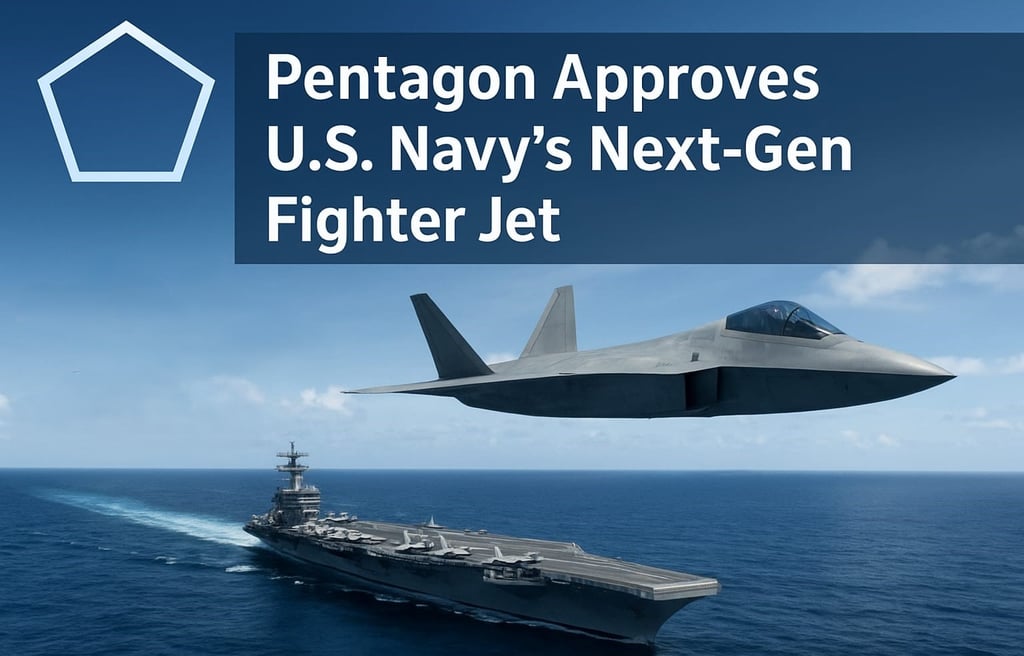Pentagon Approves U.S. Navy’s F/A-XX Next-Generation Stealth Fighter — A Major Leap in American Defense Strategy
Pentagon approves U.S. Navy’s next-gen stealth fighter program F/A-XX, boosting America’s air power amid rising global military competition.
Raja Awais Ali
10/7/20251 min read


Pentagon Approves U.S. Navy’s Next-Generation Stealth Fighter Program
On October 7, 2025, the U.S. Department of Defense (Pentagon) officially approved the U.S. Navy’s plan to develop its next-generation stealth fighter jet, a major step in strengthening America’s military air power and technological dominance. The program, known as the F/A-XX initiative, aims to replace the current F/A-18E/F Super Hornet fleet with a more advanced and versatile combat aircraft.
The new F/A-XX fighter is expected to feature cutting-edge stealth capabilities, extended operational range, enhanced endurance, and advanced digital networking systems. It will also integrate with unmanned combat systems (UCAVs), marking a major evolution in naval aviation.
According to Pentagon insiders, the approval came from U.S. Defense Secretary Pete Hegseth, who signed off on the project earlier this week. The decision signals the beginning of a crucial phase where major defense contractors such as Lockheed Martin, Boeing, and Northrop Grumman are expected to compete for the development contract.
The upcoming fighter is projected to include next-level avionics, electronic warfare technology, AI-assisted flight control systems, and modular weapons design — ensuring long-term adaptability. The Pentagon emphasized that this project will help the U.S. Navy maintain a strategic edge over China, especially amid growing tensions in the Indo-Pacific region.
Congress has proposed an initial funding of $750 million for the program, with an additional $1.4 billion under consideration for the 2026 fiscal year. Early prototypes are expected before the 2030s, while full operational deployment could begin sometime in the following decade.
Defense analysts note that the F/A-XX program could redefine the future of U.S. naval aviation by enabling the Navy to conduct longer, stealthier, and more connected missions across global theaters. This move also highlights Washington’s firm commitment to advancing defense innovation and maintaining maritime supremacy amid an evolving global threat landscape.